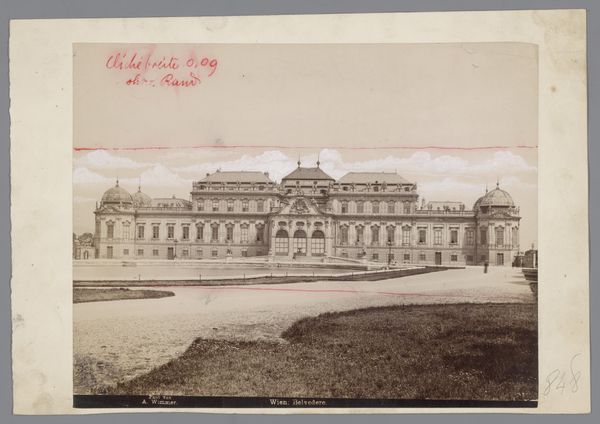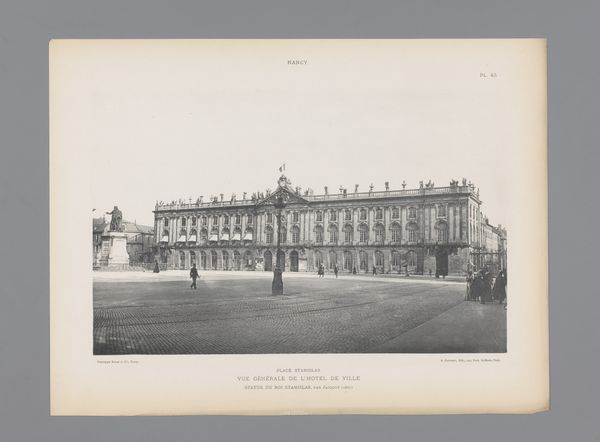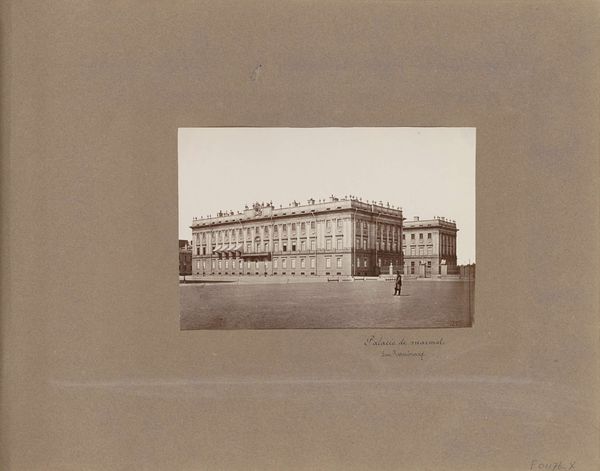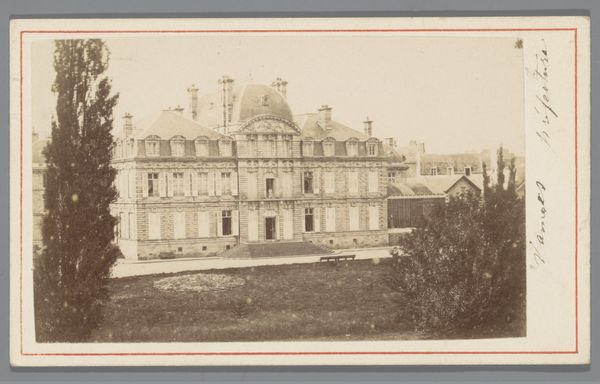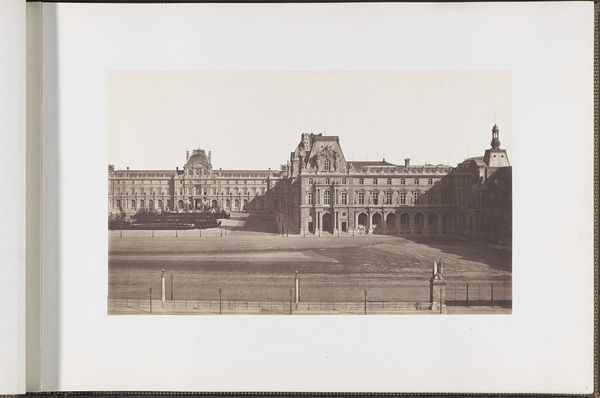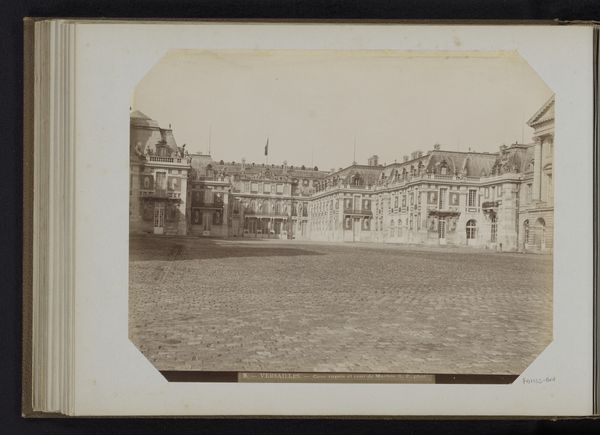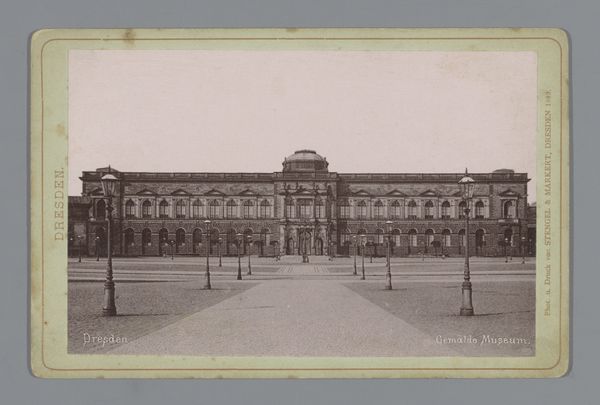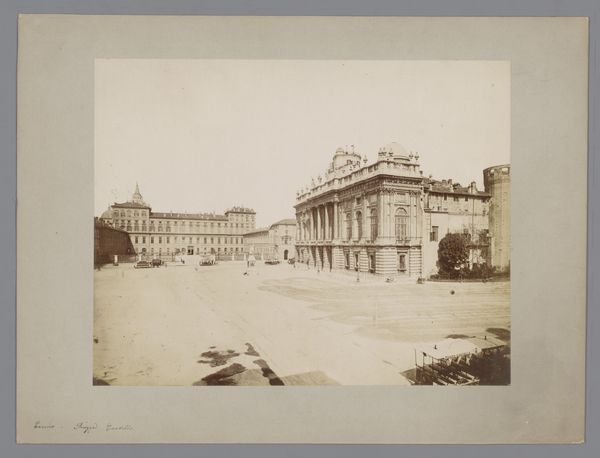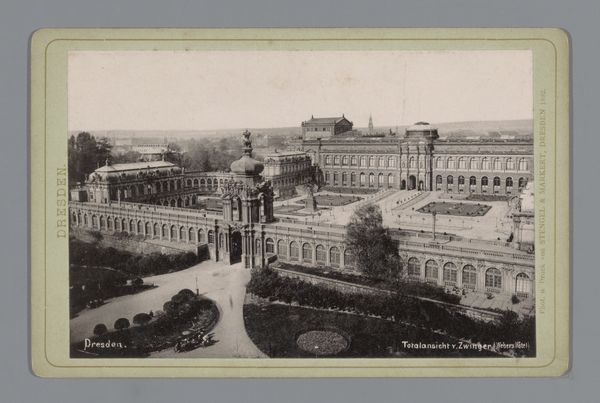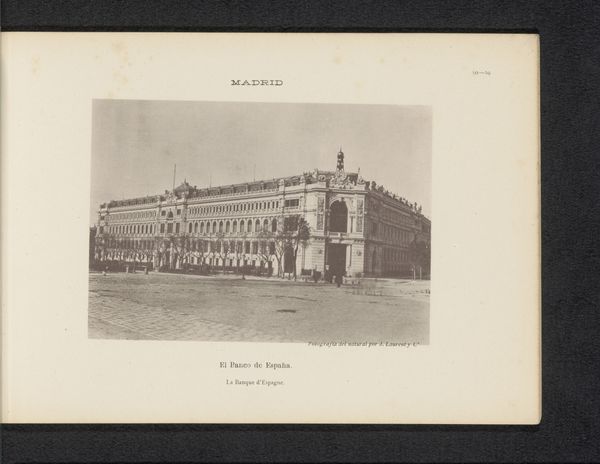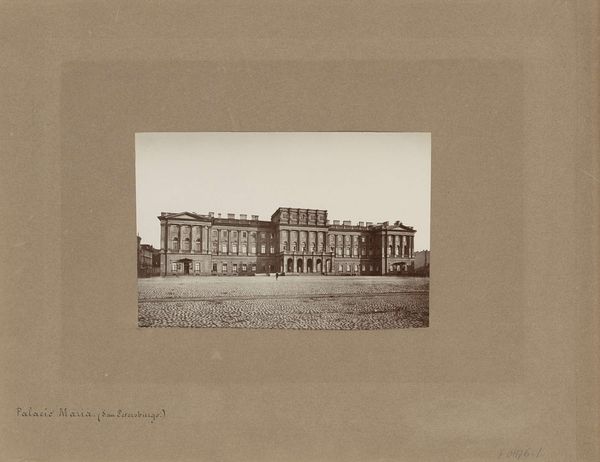
Dimensions: height 65 mm, width 103 mm
Copyright: Rijks Museum: Open Domain
Editor: So, here we have Giorgio Sommer's "Palazzo di Caserta," taken sometime between 1865 and 1888, an albumen print now at the Rijksmuseum. It’s… imposing, isn't it? A real statement of power. But what strikes me most is how static it feels. What do you see in this piece? Curator: That stillness, I think, comes from Sommer's adherence to Neoclassical ideals – a conscious revival of ancient Roman grandeur. Look at the building's severe symmetry and repetitive forms; these aren't merely architectural details but symbols. Sommer understood how potent such imagery could be, recalling a specific idea of empire and order. Does the photo hint at what that means? Editor: Well, it makes me think of authority and maybe permanence. That calculated order is quite different from the chaotic sprawl of modern cities, right? Curator: Precisely. Consider how architectural photography in the 19th century, particularly of such historically charged structures, served to legitimize present-day power structures by linking them visually to past empires. It’s a deliberate invocation. And that's intensified through the dark colour and lack of movement. What could these evoke? Editor: Now I see it. A deliberate message embedded in what seems like a simple photograph. Maybe…a sense of unyielding force, of an institution set in stone. Curator: Exactly. Sommer's not just capturing a building; he's capturing an idea, solidifying its presence, its cultural memory, in the collective consciousness. Photography becomes a powerful tool in shaping and reinforcing ideology. It's incredible when we realize how symbols continue to be used today. Editor: It really is. I’ll never look at architectural photography the same way again. Thank you!
Comments
No comments
Be the first to comment and join the conversation on the ultimate creative platform.
